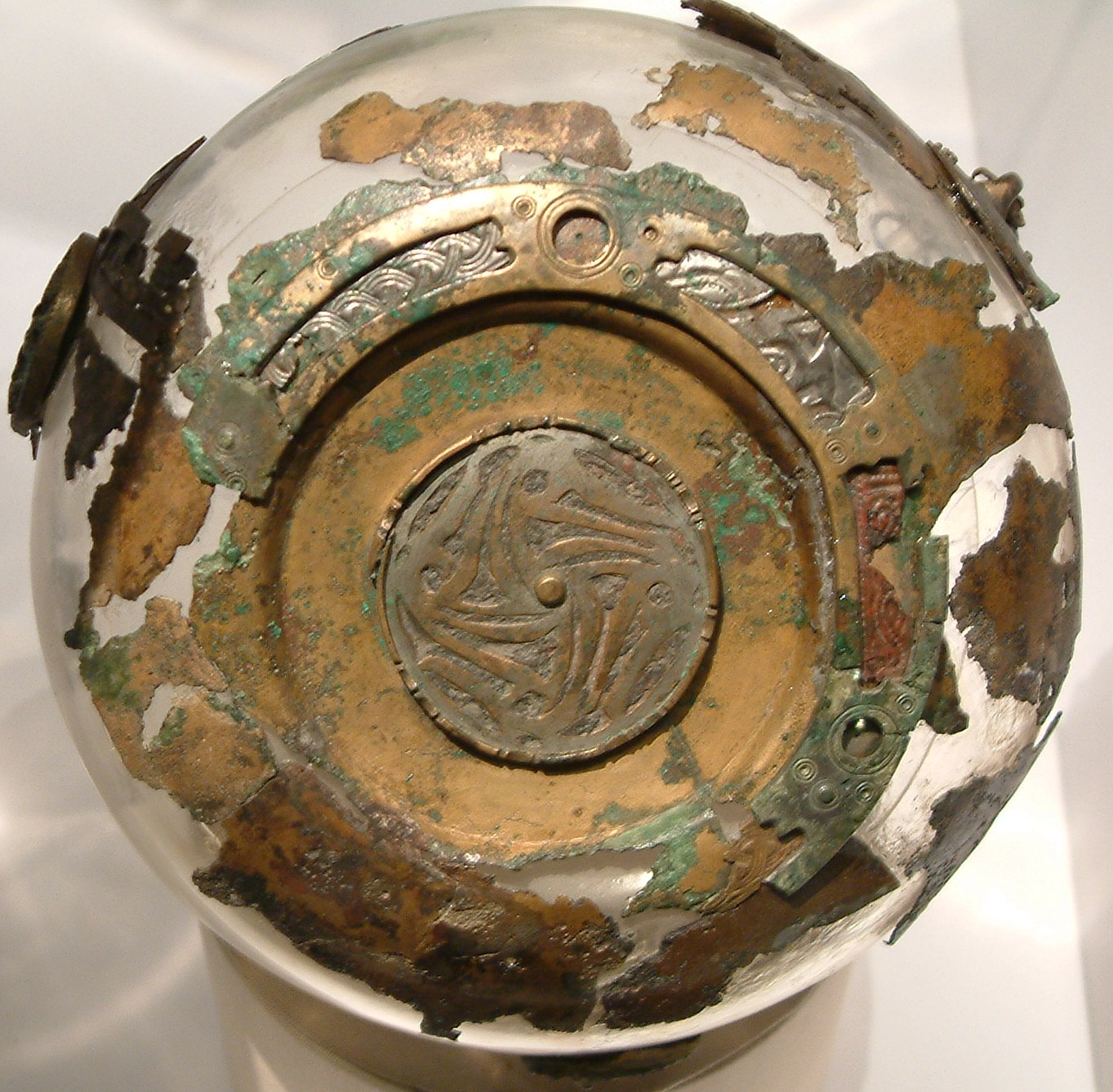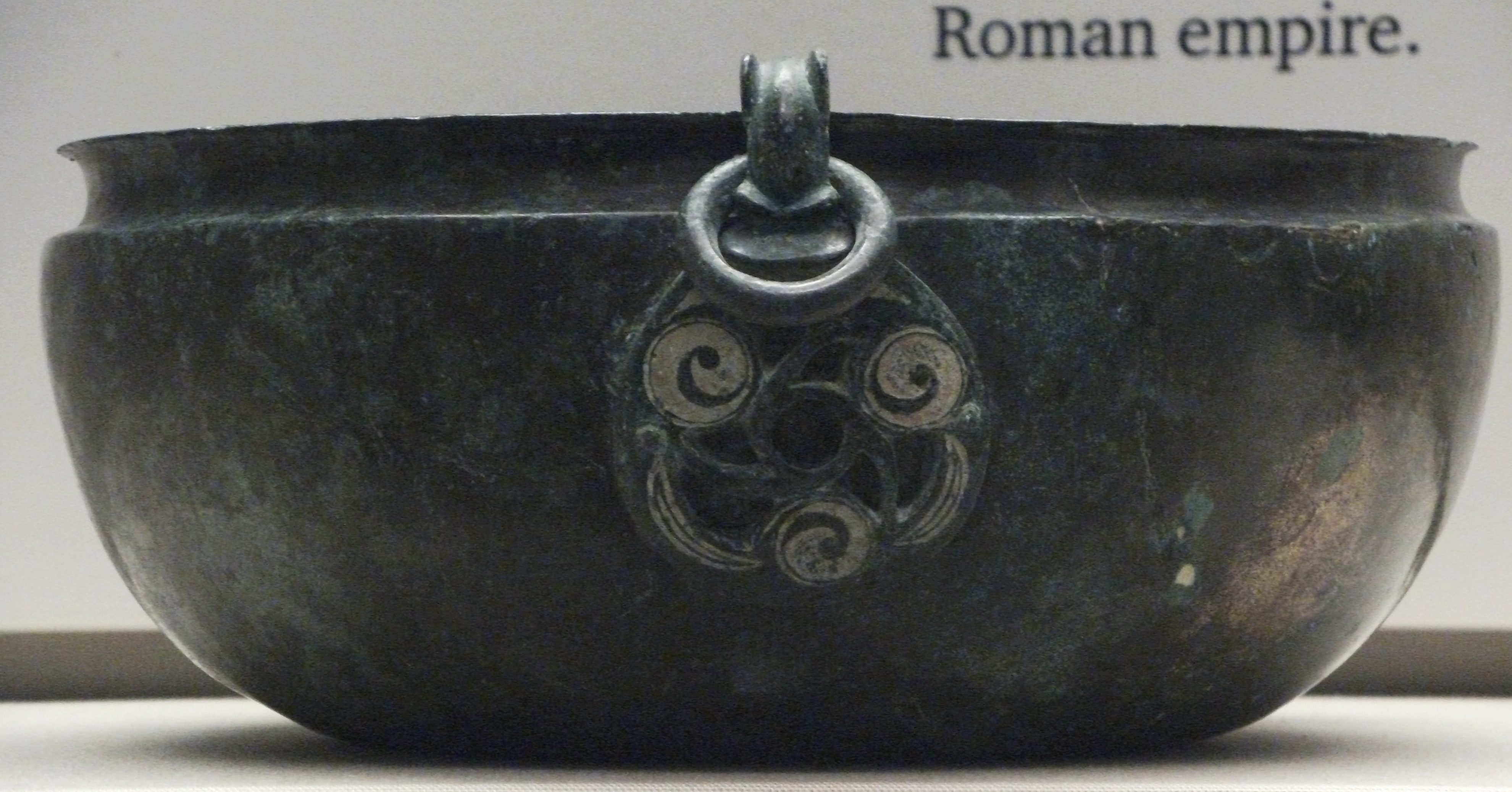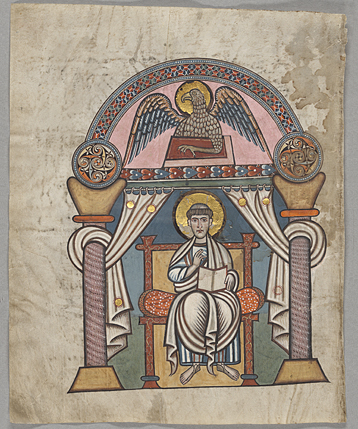Hanging Bowls on:
[Wikipedia]
[Google]
[Amazon]


 Hanging bowls are a distinctive type of artefact of the period between the
Hanging bowls are a distinctive type of artefact of the period between the
 Part of the puzzle lies in whether the bowls were normally suspended by threads from a central fulcrum (like a lamp), or from hooks on a tripod with tall wooden legs. There is some support for the latter view, because the nearest formal parallel for such bowls from antique contexts is in depictions of the ''
Part of the puzzle lies in whether the bowls were normally suspended by threads from a central fulcrum (like a lamp), or from hooks on a tripod with tall wooden legs. There is some support for the latter view, because the nearest formal parallel for such bowls from antique contexts is in depictions of the ''


end of Roman rule in Britain
The end of Roman rule in Britain was the transition from Roman Britain to post-Roman Britain. Roman rule ended in different parts of Britain at different times, and under different circumstances.
In 383, the usurper Magnus Maximus withdrew tr ...
in c. 410 AD and the emergence of the Christian Anglo-Saxon
The Anglo-Saxons were a Cultural identity, cultural group who inhabited England in the Early Middle Ages. They traced their origins to settlers who came to Britain from mainland Europe in the 5th century. However, the ethnogenesis of the Anglo- ...
kingdoms during the 7th century. The surviving examples have mostly been found in Anglo-Saxon graves, but there is general agreement that they reflect Celtic traditions of decoration.
The bowls are usually of thin beaten bronze
Bronze is an alloy consisting primarily of copper, commonly with about 12–12.5% tin and often with the addition of other metals (including aluminium, manganese, nickel, or zinc) and sometimes non-metals, such as phosphorus, or metalloids such ...
, between 15–30 cm (6-12 inches) in diameter, and dished or cauldron-shaped in profile. Typically they have three decorated plates ('escutcheons') applied externally just below the rim to support hooks with rings, by which they were suspended. The ornament of these plates is often very sophisticated, and in many cases includes beautiful coloured enamel work, commonly in champlevé and using spiral motifs. Although their designs and manufacture are thought to proceed from Celtic technique, they are principally found in eastern Britain, and especially in the areas which received Anglo-Saxon acculturation which employed grave goods in burial practices in contrast to Christian practice. Their production is also evidenced in Pictish and Irish contexts, but they seem almost completely absent from the Brittonic areas of Wales
Wales ( cy, Cymru ) is a Countries of the United Kingdom, country that is part of the United Kingdom. It is bordered by England to the Wales–England border, east, the Irish Sea to the north and west, the Celtic Sea to the south west and the ...
, Devon
Devon ( , historically known as Devonshire , ) is a ceremonial and non-metropolitan county in South West England. The most populous settlement in Devon is the city of Plymouth, followed by Devon's county town, the city of Exeter. Devon is ...
and Cornwall
Cornwall (; kw, Kernow ) is a historic county and ceremonial county in South West England. It is recognised as one of the Celtic nations, and is the homeland of the Cornish people. Cornwall is bordered to the north and west by the Atlantic ...
.
Three were found in the famous Sutton Hoo
Sutton Hoo is the site of two early medieval cemeteries dating from the 6th to 7th centuries near the English town of Woodbridge. Archaeologists have been excavating the area since 1938, when a previously undisturbed ship burial containing a ...
ship-burial, as well as one in another mound at the site. Rupert Bruce-Mitford's ''corpus'' gives the following breakdown of the locations in modern terms of the 174 finds he includes (many are just one or more elements of a bowl):
:England 117, Scotland 7, Ireland 17
:Norway 26, Sweden 2, Denmark 1,
:Germany 2, Belgium 1, Netherlands 1
Function
The bowls are enigmatic because their intended function is not certainly known. Many have finely-worked escutcheons set centrally within, which makes it unlikely that they could have contained opaque or sticky material such as lamp-fat. The theory that they were used as maritimecompass
A compass is a device that shows the cardinal directions used for navigation and geographic orientation. It commonly consists of a magnetized needle or other element, such as a compass card or compass rose, which can pivot to align itself with ...
es, with a magnetic pin floated on water within the bowl, is discounted because many have an iron band around the rim which would render this unworkable. Another opinion is that they were used for the Roman custom of mixing wine
Wine is an alcoholic drink typically made from fermented grapes. Yeast consumes the sugar in the grapes and converts it to ethanol and carbon dioxide, releasing heat in the process. Different varieties of grapes and strains of yeasts are m ...
and water for service at table. Some bowls are too small to make this explanation workable if serving a group were intended. However, in ritual Christian or other meals it would be possible for a group to dip bread into such a wine-bowl in imitation of the Last Supper.
 Part of the puzzle lies in whether the bowls were normally suspended by threads from a central fulcrum (like a lamp), or from hooks on a tripod with tall wooden legs. There is some support for the latter view, because the nearest formal parallel for such bowls from antique contexts is in depictions of the ''
Part of the puzzle lies in whether the bowls were normally suspended by threads from a central fulcrum (like a lamp), or from hooks on a tripod with tall wooden legs. There is some support for the latter view, because the nearest formal parallel for such bowls from antique contexts is in depictions of the ''Oracular Cortina
An oracle is a person or agency considered to provide wise and insightful counsel or prophetic predictions, most notably including precognition of the future, inspired by deities. As such, it is a form of divination.
Description
The word ...
'', a three-hooked bowl suspended within a tripod, over which the priestess sat when pronouncing oracles. Certainly if water were contained in the bowls it is more likely to have been for ritual or liturgical purposes than for general consumption owing to the limited capacity. This would therefore be 'special' water, perhaps consecrated for baptism or aspersion, or (in other religious circumstances) derived from a sacred source or spring. 'Tripods' are also mentioned as prizes for warriors in early literature, including the early Welsh.
Motifs
Some bowls have clearly Christian motifs on their escutcheons. The spiral ornament developed through the 6th to 7th century invention of the 'trumpet-spiral' pattern, which was afterwards adopted from these enamels and incorporated into the repertoire of the famous painted Gospel-books such as theBook of Durrow
The Book of Durrow is an illuminated manuscript dated to c. 700 that consists of text from the four Gospels gospel books, written in an Irish adaption of Vulgate Latin, and illustrated in the Insular script style.Moss (2014), p. 229
Its origin a ...
or the Lindisfarne Gospels
The Lindisfarne Gospels (London, British Library Cotton MS Nero D.IV) is an illuminated manuscript gospel book probably produced around the years 715–720 in the monastery at Lindisfarne, off the coast of Northumberland, which is now in the B ...
. This painted decoration was certainly intended for meditative contemplation and as a devotional work. From the very mixed cultures and beliefs of the inhabitants of Britain during the Dark Ages, the art, and perhaps some part of the function of these bowls became absorbed into the Celto-Saxon ornamental language of Christian Britain. Among the finest examples is the large bowl from the Sutton Hoo
Sutton Hoo is the site of two early medieval cemeteries dating from the 6th to 7th centuries near the English town of Woodbridge. Archaeologists have been excavating the area since 1938, when a previously undisturbed ship burial containing a ...
ship-burial (near Woodbridge, Suffolk), which has an enameled fish sculpture set to swivel on a pin within the bowl.
Influence on church plate
The distinctive shape of the two most famous early Irish chalices, the Ardagh Chalice and theDerrynaflan Chalice
The Derrynaflan Chalice is an 8th- or 9th-century chalice that was found as part of the Derrynaflan Hoard of five liturgical vessels. The discovery was made on 17 February 1980 near Killenaule, County Tipperary in Ireland. According to art h ...
has been described as an adaptation of the hanging bowl form for a different use,Ryan, Patrick. in Youngs, 131 although others see them as using shapes derived from Byzantine metalwork.
See also
*Benty Grange hanging bowl
The Benty Grange hanging bowl is a fragmentary Anglo-Saxon artefact from the seventh century AD. All that remains are two escutcheons: bronze frames that are usually circular and elaborately decorated, and that sit outside the rim or at the int ...
*Witham bowl
The Witham bowl is a missing piece of Anglo-Saxon art, Anglo-Saxon Tableware, silverware, described by T. D. Kendrick in ''The Antiquaries Journal'' in 1941 as "the most remarkable piece of pre-Conquest plate ever found in England". It was last s ...
Sources
The hanging bowls have been discussed in detail by many scholars, among themJohn Romilly Allen
John Romilly Allen FSA FSAScot (9 June 1847 – 5 July 1907) was a British archaeologist.
Life
Allen was the son of George Baugh Allen. He was educated at King's College School, Rugby and King's College London. In 1867 he was articled to Georg ...
, Françoise Henry
Françoise Henry (16 June 1902 – 10 February 1982) was a scholar of early Irish art, archaeologist, and art historian. While at University College Dublin (UCD), she founded the Department of History of European Painting in 1965, and was head u ...
, Sir Thomas Kendrick, Rupert Bruce-Mitford, Hayo Vierck, Jane Brenan, and most recently in the authoritative study begun by Bruce-Mitford and completed by Sheila Raven (citation below).
*R.L.S. Bruce-Mitford, ''The Sutton Hoo Ship-Burial'' Volume III Part I, 1983 (British Museum)
*R.L.S. Bruce-Mitford and Sheila Raven, ''A Corpus of Late Celtic Hanging Bowls with an account of the bowls found in Scandinavia'', 2005 (OUP)
*Susan Youngs, The Work of Angels', Masterpieces of Celtic Metalwork, 6th-9th Centuries AD'', 1989 (British Museum)
*G.D.S. Henderson, ''Vision and Image in Early Christian England'', 1999 (CUP) - Chapter 1.
Notes
{{reflist Anglo-Saxon archaeology Bronzeware Anglo-Saxon art Celtic art Vitreous enamel Medieval European metalwork objects Ancient Celtic metalwork